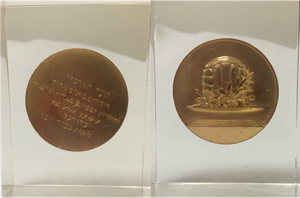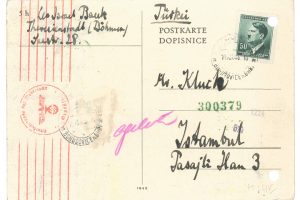
Medals of Honor
Cherished family heirlooms from Holocaust survivor’s experiences competing in JDC-sponsored soccer league.
These awards came to the JDC Archives by way of Victor’s son Al Lewis, who recognized their value in his father’s life and wanted to share the treasures with us. One of the medals is octagonal in shape and shows two soccer players vying for a ball. The medal, signed by A. Hofmann, has an etched inscription noting “A J D C” and dedicating the award to “Viktor Leserkiewicz.” The other medal is circular and shows a soccer ball with a wreath. Signed by J. Prinz, it has a Hebrew inscription, which reads in English:
The Central Committee
For Jews in Austria
Sports Competition in Bad-Ischl
16 VIII 1947
Soccer
A Sign of Honor and Memory
Alfred Hofmann (1879-1958) and Josef Prinz (1876-1960) were well-known Austrian medalists in the first half of the twentieth century.
Throughout history, medals have been given as tokens of acknowledgement for academic, scientific, military, or sporting achievement. They commemorate important events and were even utilized in matters of diplomacy. Medals were meant to stand as a testament, a tangible memory as opposed to a fleeting whim. Often made of bronze, silver, copper, gold, or iron, medals are made of their namesake: solid, dense materials that last.
The fact that “the Joint” sponsored known medalists, artists in their field, to design these medallions attests to the value and importance placed upon the competition. “The Joint” understood that organized sports were not only good for one’s health, but also helped create a semblance of community and a renewed sense of empowerment. Thus, the matches conducted at Bad Ischl were not simply informal games played to pass the time, but rather, important activities for the health and rehabilitation of survivors. The history of the events are inscribed onto precious metal, with words that literally associate the game of soccer with the qualities of dignity and strength, integral ingredients for rebuilding life after the war. Victor eventually encased the medals in Lucite, essentially transforming them into awards to be preserved and displayed. Now family treasures, the awards are still signs of “honor and memory” for the Lewis family and “the Joint.”
To learn more about the historical provenance of the awards and how they found their way to our Archives, please read our Personal Stories section.




